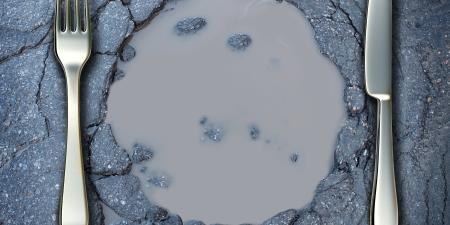Case
Mr. Juarez went to a local community clinic in south central California as a new patient because he was experiencing a slight but persistent cough, shortness of breath, headache, fatigue, muscle weakness and eye irritation. He was not febrile and reported occasional nausea during the preceding two weeks, although not at the time of the visit. He was seeing the physician as a self-pay patient.
Mr. Juarez had come to the United States recently to find work and build a family in California. The physician, Dr. Franzen, entered the room and introduced himself to the patient. After the brief introduction, Dr. Franzen realized Spanish would be the preferred language for this encounter. Thankfully, Dr. Frazen had a working knowledge of Spanish and began to converse with Mr. Juarez. He performed a typical history and physical. He noticed that Mr. Juarez’s eyes were red and heard wheezing in his chest. Mr. Juarez shared with Dr. Franzen that he had come to the U.S. with his wife and had found work on a farm near where he lived and that he missed the rest of his family back in southern Mexico.
Dr. Franzen was experiencing a particularly hectic day at the clinic, and Mr. Juarez’s symptoms could have been due to any one of many causes. Since Mr. Juarez was 27 and had an otherwise unremarkable health history, he diagnosed Mr. Juarez with hay fever, thinking it was possible that he was reacting to certain allergens for the first time.
Realizing that Mr. Juarez would be paying out-of-pocket for his medications, Dr. Franzen gave him a sizable amount of a generic antihistamine and a prescription for more. Dr. Franzen was used to seeing patients in Mr. Juarez’s circumstances, many of whom never came back to the clinic. He had seen a few patients sporadically with similar symptoms but many never followed up, so he continued to diagnose them with hay fever.
Mr. Juarez did not improve over the next week, but he could not afford to take another day off to go back to Dr. Franzen. Interestingly, he noticed that there were a number of other farm workers who had symptoms similar to his. Many of them had not visited a physician, so he thought he would wait longer before going back to Dr. Franzen.
Commentary
The case of Mr. Juarez is unfortunately all too common, as toxic chemical exposures occur with increasing frequency, both in the home and in the workplace. There are some 90,000 chemicals licensed for use in the United States by the Environmental Protection Agency, and 1,000 to 3,000 new chemicals are approved for use each year [1]. Because the Toxic Substances Control Act does not require that chemicals be proven safe before they are allowed to be marketed, it is not surprising that diseases of occupational and environmental origin are prevalent in the United States [2]. More than 800,000 illnesses and 60,000 deaths annually are attributable to occupational exposures in the United States [3], and diseases of environmental origin among American children cost our nation $54.9 billion annually [4]. These data should convince physicians to consider the possibility of toxic chemical exposure, especially when they are assessing the health of farm and factory workers.
It is true that Mr. Juarez’s symptoms could be interpreted as signs of a new onset allergy. Indeed, atopy is common in adults—with a prevalence as high as 20 percent according to one report [5], and, as the adage goes, hoof beats represent horses more often than they represent zebras. However, a number of aspects of this case make a more complete differential diagnosis and investigation of possible work and home exposures critical. First, toxic chemical exposures disproportionately affect workers [6] and communities of low socioeconomic status [7,8]. In addition, language barriers [9], lack of health insurance [10] and fear of job loss [11] make a follow-up visit nearly impossible for Mr. Juarez.
A brief environmental and occupational history [12], which can be obtained through a questionnaire completed in the waiting room [13,14] would have allowed Dr. Franzen to identify and prevent potential further toxic exposures in Mr. Juarez’s case. The clinical encounter with Mr. Juarez should be conducted at a level that matches his health literacy. Many workers do not know all the chemicals being used or the names of the chemicals to which they are exposed, so the occupational and environmental history [15] should seek to uncover possible etiologic associations when patients present with symptoms that suggest a disease of environmental origin. Unfortunately, because most physicians have little training in environmental health, these diseases are often misidentified and misattributed to allergic and infectious causes [16,17]. Some U.S.- accredited medical schools still fail to include occupational and environmental medicine in the curriculum, and those that do provide an average of seven hours over the four years of medical school [18]. Fewer than half of pediatric residency programs offer training in environmental issues other than lead poisoning and asthma [19].
This particular case is classic for acute pesticide toxicity, though the exact causative agent cannot be readily identified except by an investigation of the work and home environments. Pesticides were first developed in World War II as nerve gas agents. Organophosphate pesticides in particular are well known for their phosphorylation of the acetylcholinesterase enzyme, leading to an accumulation of acetylcholine that stimulates a wide array of nicotinic, muscatinic and other receptors. The Mad Hatter in “Alice in Wonderland,” although he was poisoned by mercury, provides a useful mnemonic for the anticholinergic symptoms of organophosphate poisoning: mad as a hatter, blind as a bat, dry as a bone, red as a beet, hot as a pistol [20].
To evaluate for organophosphate poisoning, Dr. Franzen could have measured Mr. Juarez’s serum acetylcholinesterase level or screened his urine for pesticide metabolites [21]. However, a normal acetylcholinesterase level does not eliminate pesticide poisoning, inasmuch as a number of other pesticides have similar health effects but do not directly rely upon acetylcholinesterase inactivation [20].
It would be unfair to expect Dr. Franzen to know the toxic effects of all of the 90,000 chemicals that are widely produced in the United States, but there are a number of readily accessible resources at the disposal of clinicians who evaluate environmental or occupational exposure. The Occupational Health and Safety Administration mandates that physicians have access to the Material Safety Data Sheets for chemicals to which their patients are exposed [22]. These data sheets contain important information about toxicity that can be useful in assessing symptoms that do not fit a typical clinical pattern.
The Centers for Disease Control and Prevention ToxFAQ Web site [23] provides useful information about the toxic effects of environmental chemicals. Immediate clinical consultation about acute exposures can be obtained from the national network of Poison Control Centers on a 24-hour, 7-day-a-week basis [24].
For evaluation of chronic exposures that are more complex, the Association of Occupational and Environmental Clinics can connect health professionals to occupational medicine specialists. They in turn can help the primary physician decide whether the clinical scenario represents an occupational disease and whether further referral or intervention is necessary.
Occupational clinics also have social workers, nurses, industrial hygienists and lawyers on their staffs to provide comprehensive care and to protect workers from the potential consequences of calling attention to an occupational hazard [25]. If a workplace investigation is necessary, state and local public health officials often work closely with the National Institute of Occupational Safety and Health and the Agency for Toxic Substances Disease Registry to collect the environmental samples and guide further clinical investigation of others who were exposed.
Mr. Juarez and his coworkers are not the only ones who are likely to be affected by pesticide exposure in this case. Workers can also carry toxic chemical residues on their clothing that then cause damage to others in the home [26]. Children are especially vulnerable to pesticides because their nervous systems and other organs are undergoing rapid development. If cells in an infant's brain are destroyed by chemicals or if connections between neurons fail to form, permanent neurological or cognitive dysfunction may result [27]. In the first two years of life, the blood-brain barrier is also more permeable, so toxins can enter the cerebrospinal fluid more readily [28]. Lead [29], mercury [30], polychlorinated biphenyls [31] and pesticides [32] have all been proven to cause cognitive impairment. Rising rates of childhood cancer, birth defects, asthma and developmental disabilities have been increasingly linked to chemical factors in the environment [33]. Workers who use these materials should change their clothing before going home and can take other steps such as showering prior to entering their homes to minimize inadvertent exposure to their families [20].
Ultimately, prevention of environmental hazards requires adequate testing of chemicals before they are brought to market and ongoing studies that assess health effects of exposure to those chemicals once they are in use. The National Children’s Study is the first study ever to examine comprehensively the effects of toxic chemicals on human health and development. Congress should fully fund this landmark initiative, so that we can proactively prevent diseases of environmental origin. Otherwise, we will continue to embark upon a dangerous and unnatural experiment on our nation.
In the meantime, physicians in Dr. Franzen’s situation should take an environmental and occupational history; be familiar with sources of information about chemical toxicity; order appropriate lab tests to rule out or confirm possible toxic disease; and, in cases where patients are indeed suffering from toxic exposure in the workplace, advise them how to minimize further exposure to themselves and members of their households. Physicians should also tell patients with work-related toxic illness that services are available to protect them from the consequence of calling attention to the occupational hazard.
References
-
Office of Pollution Prevention and Toxic Substances. Chemicals-in-commerce information system. Chemical Update System Database. Washington, DC; 1998.
- Black H. GAO sounds off on chemical regulation. Environ Health Perspect. 2005;113(12):A828-A830.
- Leigh JP, Markowitz SB, Fahs M, Shin C, Landrigan PJ. Occupational injury and illness in the United States. Estimates of costs, morbidity, and mortality. Arch Intern Med. 1997;157(14):1557-1568.
- Landrigan PJ, Schechter CB, Lipton JM, Fahs MC, Schwartz J. Environmental pollutants and disease in American children: estimates of morbidity, mortality, and costs for lead poisoning, asthma, cancer, and developmental disabilities. Environ Health Perspect. 2002;110(7):721-728.
- Upton MN, McConnachie A, McSharry C, et al. Intergenerational 20 year trends in the prevalence of asthma and hay fever in adults: the Midspan Family Study surveys of parents and offspring. BMJ. 2000;321(7253):88-92.
- Murray LR. Sick and tired of being sick and tired: scientific evidence, methods, and research implications for racial and ethnic disparities in occupational health. Am J Public Health. 2003;93(2):221-226.
-
Bullard RD. Dumping in Dixie: Race, Class and Environmental Quality. Boulder, Colo: Westview Press; 1990.
- Brown P. Race, class, and environmental health: a review and systematization of the literature. Environ Res. 1995;69(1):15-30.
- Flores G. Language barriers to health care in the United States. N Engl J Med. 2006;355(3):229-231.
- Traynor K. Uninsured numbers keep climbing. Am J Health Syst Pharm. 2006;63(19):1783-1784.
- McCauley LA, Sticker D, Bryan C, Lasarev MR, Scherer JA. Pesticide knowledge and risk perception among adolescent Latino farmworkers. J Agric Saf Health. 2002;8(4):397-409.
- Thompson JN, Brodkin CA, Kyes K, Neighbor W, Evanoff B. Use of a questionnaire to improve occupational and environmental history taking in primary care physicians. J Occup Environ Med. 2000;42(12):1188-1194.
-
Frank AL, Balk S. Case Studies in Environmental Medicine (CSEM). Taking an Exposure History. Available at: http://www.atsdr.cdc.gov/HEC/CSEM/exphistory/index.html. Accessed October 18, 2006.
-
National Environmental Education and Training Foundation. Pediatric environmental history forms. Available at: http://www.neetf.org/Health/PEHI/HistoryForm.htm. Accessed October 12, 2006.
- Lax MB, Grant WD, Manetti FA, Klein R. Recognizing occupational disease—taking an effective occupational history. Am Fam Physician. 1998;58(4):935-944.
- Trasande L, Schechter C, Falk R, et al. The environment in pediatric practice: a study of New York pediatricians’ attitudes, beliefs, and practices towards children’s environmental health. J Urban Health. 2006;83(4):760-772.
- Trasande L, Schapiro ML, Falk R, et al. Pediatrician attitudes, clinical activities, and knowledge of environmental health in Wisconsin. WMJ. 2006;105(2):45-49.
- Schenk M, Popp SM, Neale AV, Demers RY. Environmental medicine content in medical school curricula. Acad Med. 1996;71(5):499-501.
- Roberts JR, Gitterman BA. Pediatric environmental health education: a survey of US pediatric residency programs. Ambul Pediatr. 2003;3(1):57-59.
-
Etzel RA, Balk SJ, eds. Pediatric Environmental Health. 2nd ed. Elk Grove Village, Ill: American Academy of Pediatrics; 2003:324-360.
- Kamanyire R, Karalliedde L. Organophosphate toxicity and occupational exposure. Occup Med (London). 2004;54(2):69-75.
-
Occupational Health and Safety Standards. 29 CFR 1910.146, 1910.20 (1997).
-
Department of Health and Human Services, Agency for Toxic Substances and Disease Registry. ToxFAQs: frequently asked questions about contaminants found at hazardous waste sites. Available at: http://www.atsdr.cdc.gov/toxfaq.html. Accessed October 12, 2006.
-
American Association of Poison Control Centers. AAPCC homepage. Available at www.aapcc.org. Accessed October 12, 2006. In an emergency call 800-222-1222.
-
Association of Occupational and Environmental Clinics. Clinic Directory. Available at: www.aoec.org/directory.htm. Accessed October 12, 2006.
- Coronado GD, Vigoren EM, Thompson B, Griffith WC, Faustman EM. Organophosphate pesticide exposure and work in pome fruit: evidence for the take-home pesticide pathway. Environ Health Perspect. 2006;114(7):999-1006.
- Bellinger D, Leviton A, Waternaux C, Needleman H, Rabinowitz M. Longitudinal analyses of prenatal and postnatal lead exposure and early cognitive development. N Engl J Med. 1987;316(17):1037-1043.
- Rodier PM. Developing brain as a target of toxicity. Environ Health Perspect. 1995;103(Suppl 6):S73-S76.
- Laraque D, Trasande L. Lead poisoning: successes and 21st century challenges. Pediatr Rev. 2005;26(12):435-443.
- Trasande L, Landrigan PJ, Schechter C. Health and economic consequences of methyl mercury toxicity to the developing brain. Environ Health Perspect. 2005;113(5):590-596.
- Jacobson JL, Jacobson SW. Intellectual impairment in children exposed to polychlorinated biphenyls in utero. N Engl J Med. 1996;335(11):783-789.
- Berkowitz GS, Wetmur JG, Birman-Deych E, et al. In utero pesticide exposure, maternal paraoxonase activity, and head circumference. Environ Health Perspect. 2004;112(3):388-391.
-
Landrigan PJ, Trasande L, Thorpe LE, et al. The National Children's Study: A 21-year prospective study of 100,000 American children. Pediatrics. In press.



